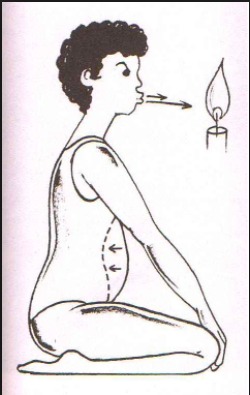Breathing is such an important and fundamental aspect of what it means to be alive.
Yet so many people are unaware of their breathing.
Why should you be aware of your breathing? Because breath is the bridge between the body and the mind, and in order to maintain good health and transition into higher stages of spiritual development you must maintain harmony between your body and mind.
The image of the centaur, half-man and half-horse, demonstrates the mind body connection perhaps better than any other I can conjure. The centaur symbolizes the fundamental conflict or split between mind and body, intellect and instinct, animal self and spiritual self.
Not only do most people breath unconsciously, limiting their health and development, most people don't realize that two other categories of breathing exist beyond the ordinary category of natural breathing.
So let me outline the three categories of breathing:
1. Quiet breathing
I also refer to quiet breathing as natural breathing or tidal breathing because it mimics the in and out pattern of the ocean waves as they ascend and descend the beach.
Quiet breathing requires only that you allow your breath to function at its own pace and that you merely observe its activities.
Click here for a detailed description of how to engage natural breathing.
2. Deep breathing
I also refer to deep breathing as bellows breathing because it mimics the expansion and contraction of a bellows.
Deep breathing requires that deliberately expand your belly with air using your diaphragm, controlling its length and pace as it enters and exits the nostrils, thereby calming your mind and nervous system.
Click here for a detailed description of how to engage deep breathing.
3. Fast breathing
I also refer to fast breathing as fire breathing because it mimics the forceful exhalation of a dragon blowing fire from its mouth.
Fast breathing requires that forcibly exhale either through your mouth or nostrils, allowing the inhale to occur naturally, thereby energizing your body, sharpening your focus, cleansing yourself of toxins.
Click here for a detailed description of how to engage fast breathing.
Overall, understand that these different styles of breathing are useful at different times of day.
You wouldn't engage fast breathing while you were sitting in your seat on an airplane or standing in line at Starbucks, but you might engage it before or after a physical workout or a meditation session.
And you wouldn't engage deep breathing in the middle of a vigorous series of vinyasa movements, but you might engage it while seated or standing comfortably still during meditation or qi gong session.
If you have never paid attention to your breathing before, start with natural breathing, then experiment with deep breathing and fast breathing.
Happy breathing!




